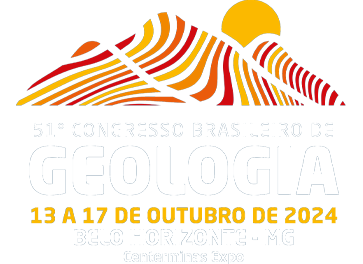Dados da Submissão
Título
ALLUVIAL RECORDS AS A PROXY TO UNDERSTAND CONTAMINATION HISTORY IN THE PARAUAPEBAS RIVER BASIN, CARAJÁS MINERAL PROVINCE
Texto do resumo
The Carajás Mineral Province (CMP) in southeastern Amazonia has world-class iron and copper deposits besides nickel, manganese, and active gold mines. The CMP owns deforested areas (e.g., pasture and livestock farming) and pristine tropical rainforests, which compose a strong environmental contrast in the region. Besides the anthropic changes in the landscape in the last 40 years and potentially toxic elements (PTE) in soils and stream sediments, it is essential to assess the sources of environmental impacts. This work presents an integrated geomorphological, sedimentological, and geochemical analysis of part of the Parauapebas River Basin (PRB), focusing on the development and evolution of alluvial deposits over the late Holocene until modern times and in the variations of historical levels of PTE in the environment. The alluvial records in this work basin start at 3364-3454 cal yr BP with the formation of the modern marginal environments of upland lakes of the Bocaína plateau (Carajás Basin geological domain); the main channel, side, and mid-channel bars of the PRB have already developed around 2781-2945 cal yr BP on the Canaã dos Carajás Domain (CCD). Geochemical signatures of elemental ratios between sedimentary environments from the same geological domain suggest that changes in sediment provenance may have a stronger influence than sorting mechanisms over time. In general, each geological domain and geomorphological compartment registers its geochemical signature in the alluvial deposits formed within its areas of occurrence. Therefore, PTE, such as Ba, Co, Mn, and Zn, that are naturally enriched in the metavolcanic rocks (Parauapebas and Igarapé Cigarra formations), dominant in the Carajás Domain, particularly in the Bocaína amphitheater, were already concentrated in alluvial sediments throughout Late Holocene. In this area, an extensive tributary network of the Parauapebas River, with headwaters in the Bocaína plateau, was entirely abandoned due to the increase in surface runoff and silting up of tributaries associated with intense changes of land cover and land use (LCLU) from 1985 to 2005, resulting in a rapid shift from primary forests to livestock pastures. The concentrations of these PTE in the abandoned channels are significantly higher than threshold concentrations admitted by Brazilian and international environmental regulations. Hence, the contamination history based on sedimentary records was used in conjunction with previous background and fractionation studies to precisely differentiate the impact of geogenic from anthropogenic sources in the PTE enrichment.
Palavras Chave
Environmental geochemistry; fluvial environments; Amazonia; Carajás; Quaternary
Área
TEMA 02 - Recursos Hídricos e Geociências Ambientais
Autores/Proponentes
JOSÉ TASSO FELIX GUIMARÃES, Mariana Maha Jana de Figueiredo, Edilson Freitas da Silva, Gabriel Negreiros Salomão, Roberto Dall'Agnol, Silvio Ramos
